Gas indicators in food packaging Due to the activity of the food product (such as respiration and transpiration of fresh produce from horticulture, agriculture, as well as spoilage caused by microorganisms), the nature of the package changes (such as the gas permeability of the packaging material) and the environmental conditions (temperature or package leakage) and directly with the integrity, Shelf life, quality and safety of packaged food products are related.
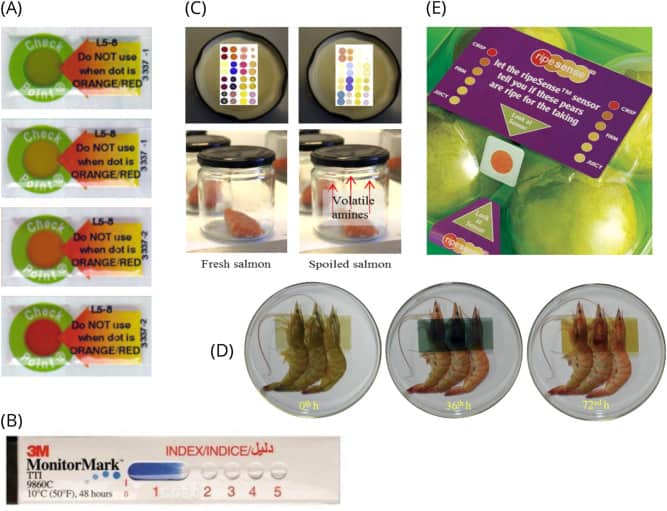
Monitoring changes in gas composition inside the package
For Monitoring changes in gas composition inside the package And as a result, providing a tool to monitor the quality and safety of food products, from different types of gas indicators Food packing in the form of Closed label or packaging printing film is used that detects oxygen, ethanol, hydrogen sulfide (H2S), water vapor, carbon dioxide, or other gas components.

Oxygen gas indicators
Oxygen can cause detrimental effects on food quality through oxidative pickling, discoloration, and microbial spoilage. Therefore, oxygen indicators are widely used in food packaging.
Generally, a gas indicator produces an irreversible and visible color change on the package in response to changes in gas composition. Wilhelm and Wolfbiss (2010) presented two different absorption-based optochemical indicators for oxygen, consisting of leuco dyes (leuco indigo and leuco thioindigo) incorporated into two types of polymer matrix, poly(styrene-co-acrylonitrile) (PSAN, with 30% by weight of acrylonitrile) and hydrogel polymer D4 (a linear polyurethane).
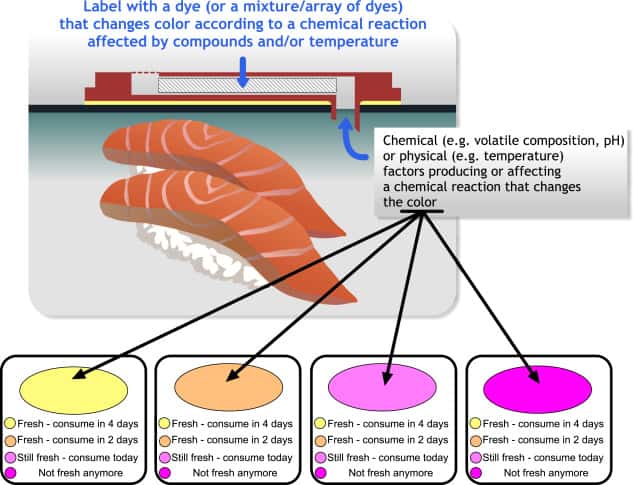
Indicator LI-D4
The results showed that LI-D4 (leuco indigo in a highly oxygen permeable hydrogel polymer) caused an irreversible color change (from pale yellow to deep blue) indicating the presence of air (oxygen) within minutes, which was sufficient to detect a leak. It is important in food packaged in a modified atmosphere.
LTI-PSAN indicator
The LTI-PSAN marker (leuco thioindigo within PSAN) required several hours to gradually change color from yellow to red after exposure to air.
This study provided a cost-effective tool to visually detect and monitor seal condition and quality deterioration of packaged foods, including fish and meat. Additionally, a reversible oxygen indicator has been developed by DryPak Industries that can be placed in a container and change color from pink to blue when the oxygen concentration is greater than 0.5%.
This oxygen gas indicator is very similar to the Ageless Eye* product sold by Mitsubishi Gas Chemical Company. However, the two oxygen indicators cannot show the time of exposure to different oxygen concentrations (the color transition from blue to pink occurs at oxygen concentrations below 0.1%).
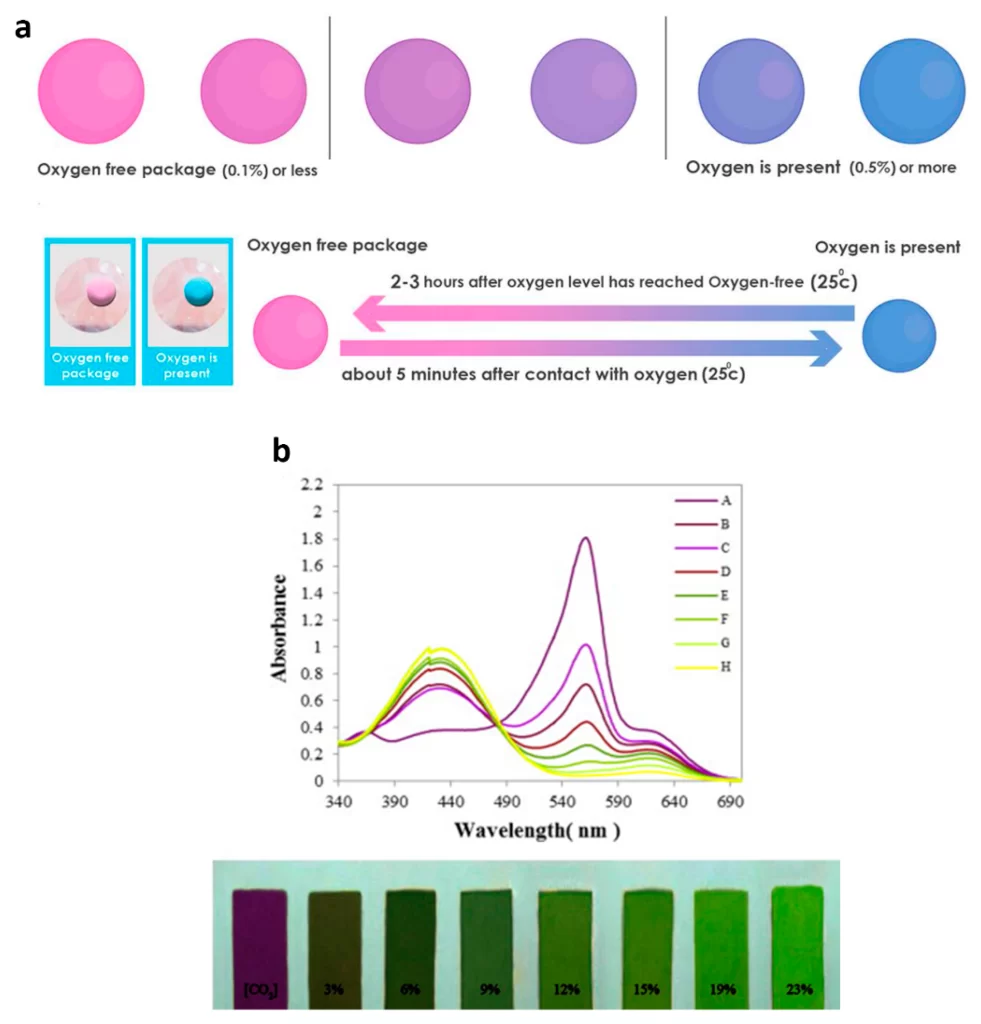
Carbon dioxide gas indicators
Chatterjee and Sen in 2015 developed a carbon dioxide indicator to respond to the presence of carbon dioxide by changing color from red to yellow. Other applications of carbon dioxide indicators include measuring the degree of fermentation in kimchi products during storage and distribution, and displaying carbon dioxide concentrations in modified atmosphere packaging (MAP).
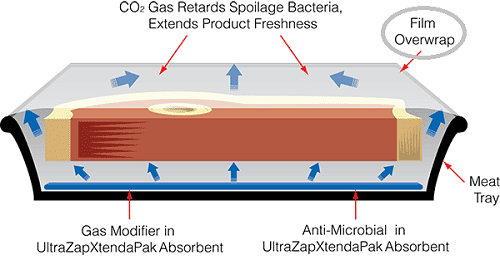
Summary of gas indicators
In the near future, RFID combined with gas markers is likely to become an important technique to realize real-time dynamic monitoring of changes in gas composition in smart food packaging along the entire supply chain.
However, according to the research that Vira’s team In this context, to integrate gas indicators into RFID tags, gas indicators must be automatically read and converted into electrical signals, which is one of the most challenging problems facing food technology researchers and is likely to be expensive. It should be considered high for these integrated indicators that their use is not cost-effective except in certain circumstances.
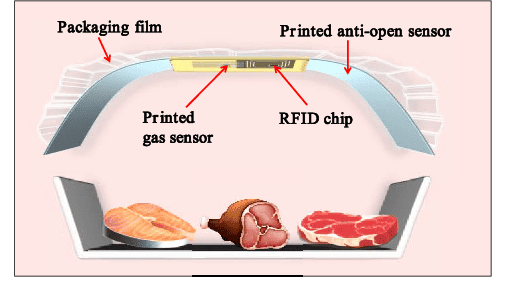
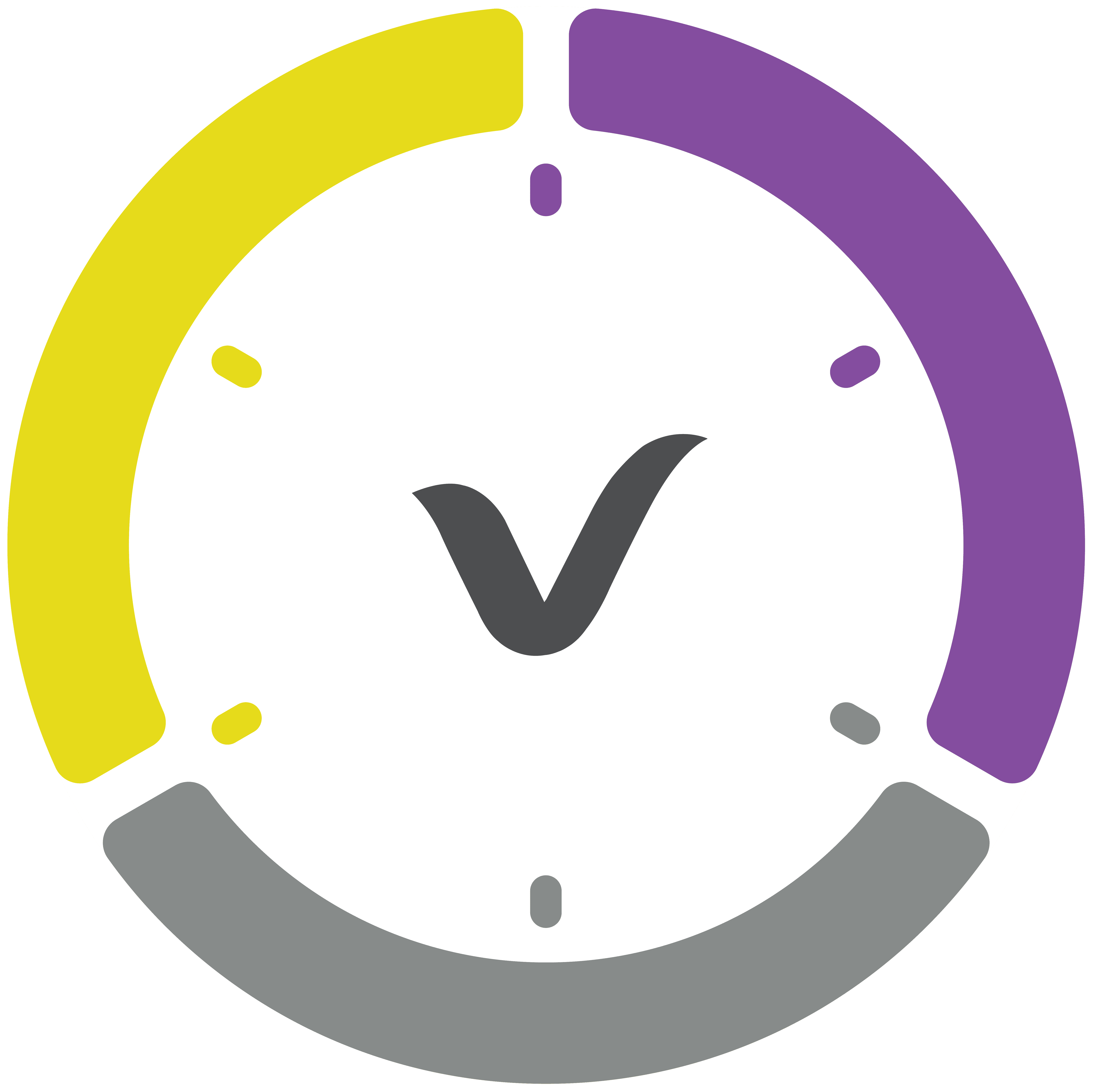

Hi, i was interested in your gas indicator label. I want to buy it.
Can I buy this oxygen, carbon dioxide indicator products?
Thank you very much for your comment and your attention to us. Currently, we are working on our own method because gas sensors have disadvantages that our method and our smart labels have fixed these defects. In the future, to complete our products, we will add other sensors according to the type of customer use.
Due to the fact that our location is in Iran, unfortunately we are currently only operating in Iran.
How can I buy this Oxygen indicator?
Hello, I hope you are well
Currently, gas sensors are in the research and development phase and are being used in a controlled manner in certain cases and have not been made available to the public or for sale.